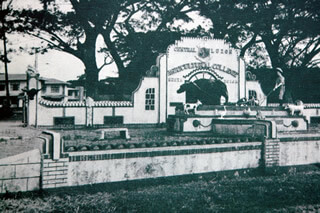The Central Luzon State University (CLSU) started as a farm school, the Central Luzon Agricultural School (CLAS), through Executive Order No. 10 issued on April 12, 1907 by the then Governor of the Province of Nueva Ecija, James F. Smith, who declared a public agricultural domain in Muñoz as the site of the agricultural school.
As a farm school, the major activities of CLAS included skills training and disciplined community life for farm productivity and sound family living. The students learned the rudiments of better farming methods, agricultural mechanics and homemaking arts. These activities soon evolved into a model vocational-agricultural teaching and learning program which became its legacy to the country in so far as the CLAS experience was concerned. As a result, CLAS became a byword for productive farming methods.
CLAS was converted into the Central Luzon Agricultural College (CLAC) by virtue of Executive Order No. 393 issued by then President Elpidio Quirino on December 31, 1950. The existence of CLAC coincided in large part to the early beginning of higher education in agriculture in the Philippines. It was the first state institution in the country to offer a four-year curriculum for training teachers of vocational agriculture. One of the unique features of this program was the requirement of practicum, a special instruction requiring certain hours per week of actual work. The underlying concerns in practicum were “learning-by- doing”, acquisition of practical skills and expertise; including the value and dignity of work; and forestalling the “white-collar” mentality. Hence, CLAC was known as “the mother of vocational agricultural schools” in the country.
CLAC became the Central Luzon State University on June 18, 1964 by virtue of Republic Act No. 4067. As embodied in its enabling act, the “University shall primarily give professional and technical training in agriculture and mechanic arts besides providing advanced instruction and promoting research in literature, philosophy, the sciences, technology and art”.
Now, for more than 100 years, CLSU stands proud as one of the more renowned and prestigious higher education institutions in the country. It straddles on a 658 hectare-campus in the Science City of Muñoz, Nueva Ecija, 150 kilometers north of Manila. Then and now, the university is a shining example of an institution that has dedicated itself to the task of producing well-trained people and providing services with an indelible mark of excellence.








